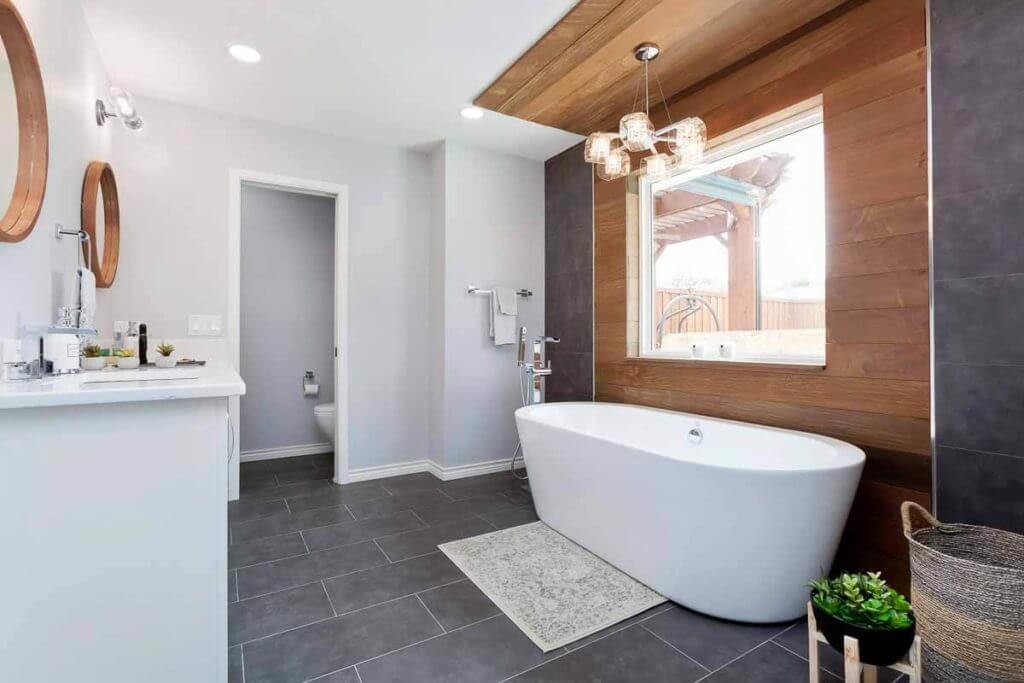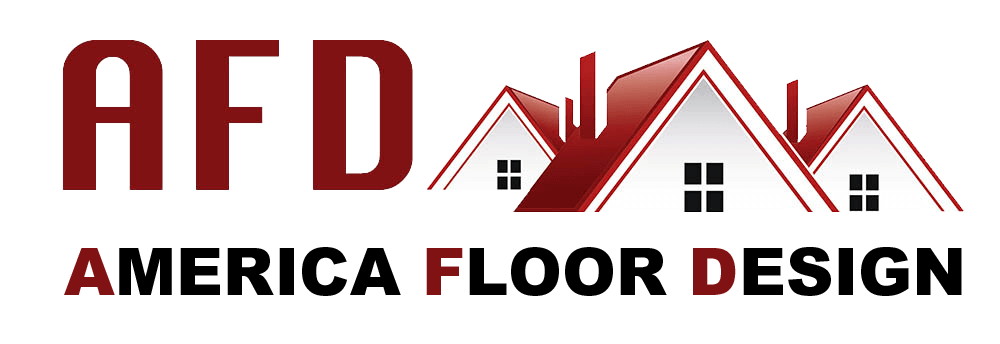A bathroom makeover is an easy method to beautify your house. But prior to you begin taking measurements for an open shower, you should put in the time to plan your bathroom restoration step-by-step so you know precisely what you’re entering.
How Much Does a Bathroom Remodel Cost?
According to Angie’s List, the average total expense of a bathroom remodel is in between $10,000– $15,000, with labor expenses taking up a minimum of 20% of the budget. By going to the do-it-yourself renovation path, you can anticipate saving as much as a couple of thousand dollars.
Curious about how to remodel a restroom yourself? Have a look at our detailed guide to find out the best method to tackle your restroom remodel.
Establish Your Bathroom Makeover Design
Prior to you do any bathroom remodeling yourself, you must pick a new design that fits your vision, as well as your ability. There are many various ways to approach a restroom remodeling, varying from swapping out the vanity to gutting the area and starting over from scratch.
Here are a few style aspects you absolutely require to pin down prior to you begin your restroom restoration:
Color pattern: Are you a fan of blue hues? Or perhaps shades of gray fit the rest of your decoration? Know ahead of time to ensure your new bathroom tiles do not clash with your option of paint.
New components: Will you replace or renovate your shower/tub? Are you installing a new sink? Replacing one or both of these fixtures will add to your job time and spending plan.
Storage areas: Where will you keep your towels and toiletries post-remodel? If you’re removing a closet to expand the space, make certain you have shelving or cabinets to offset the lost storage space in your restroom.
Place of utilities: Do you understand where the electrical wiring and plumbing pipes are found? Make certain you have precise measurements for each of these so you do not end up needing costly repair work.
Renovated Bathroom With Blue Vanity and White Tiles
Collect Your Remodeling Tools and Supplies
Obviously, you may require a few things beyond your essential property owner tool collection, but the specific tools required will vary based upon your restoration plans. However, these are a couple of essential tools to have on hand for any bathroom remodeling.
Vital Tools and Supplies for a DIY Bathroom Remodel:
Security mask
Gloves
Safety glasses
Caulking weapon
Silicone sealant
Hammer
Tape measure
Spackle knife
Spackle
Stud finder
Power drill
Pry bar
Pail
Chisel
Adjustable wrench
Flathead screwdriver
Hacksaw
Utility knife
Chalk line
Extension cord
A Few Optional Tools We Recommend:
Wet-dry Shop-Vac: Very helpful in case any water spills while getting rid of the toilet or other fixture.
Cordless drill: Makes it simpler to move and frees up your extension cable for other power tools.
If you don’t have either of these tools, they are available to rent at most house enhancement shops for a minimal cost.
Man Demolishing a Bathroom Floor
Actions to Remodel a Bathroom
- Remove or Demolish Bathroom Fixtures
Assuming you’re partly or absolutely remodeling your restroom, this is where you’ll begin getting rid of drywall and any fixtures you’re changing. Remodeling a bathroom yourself isn’t all that hard, however, there are a couple of steps you must follow to prevent any expensive mistakes during the demolition stage.

Tips for Gutting a Bathroom:
Start by draining pipes and removing the toilet to avoid any unpleasant spills.
Next, if you’re eliminating your bathtub, cover the tub and start eliminating the bath tile down to the studs. This is needed in order to revamp the pipes to fit your brand-new shower/tub design.
Get rid of the insulation from your walls where required. Do not use a hammer on insulation, rather utilize a reciprocating saw to eliminate the panels. A security mask, gloves, and safety glasses are a need.
Lastly, get rid of cabinets, vanities, mirrors, floor tiles and any other functions you plan to replace. When getting rid of tile flooring, it’s a great idea to get rid of the baseboards and re-install them later on.
Restroom Remodeling Tip: Renting a dumpster for your demolition particles will enable you to get rid of whatever at the same time without needing to drive to the regional dump, cutting hours off your job time.
- Install Your New Shower or Tub Basin
After you’ve gutted your bathroom, its time to install your brand-new components. For a shower or tub replacement, you’ll want to choose a pan or basin that fits your brand-new decor, as well as the area where your current tub sits.
Shower Remodeling Design Choices
In terms of shapes, you normally have three options:
Rectangular
Square
Pentangle (base with one corner cut off).
The base shape you choose will determine your layout, so make certain you consider the other functions of your restroom in advance, including the location of the door. You could also consider installing a mix shower and tub if you have space.
If there are any signs of decomposing wood or water damage to your subfloor, you ought to change it before installing your brand-new shower to prevent additional damage.
Bathroom Remodeling Tip: A walk-in shower conversion is a trendy, space-saving upgrade to make in any home. If you’re converting your tub to a shower during your bathroom transformation, have a look at this guide to a DIY walk-in shower conversion.
- Install New Fixtures and Features.
With the shower out of the way, you can now install your brand-new vanity and cabinets. If their dimensions are larger or smaller than your existing ones, you’ll need to renovate your restroom a little additional by adjusting the wiring.
For the most part, that indicates moving the GFCIs (Ground Fault Circuit Interrupters) and other power outlets so that they associate your brand-new vanity and cabinets. After all, you do not want to need to reach down next to the toilet in order to plug in your hair clothes dryer. You must contact an electrician for this action, especially if you have never worked with house electrical wiring prior to.
Man Laying Tiles on Floor.
- Set Your New Floor Tiles.
A DIY bathroom remodeling is not complete without brand-new floor tiles. However prior to you start boning up with the grouting, use a mason’s chalk line to mark reference lines perpendicular (at a 90-degree angle) to the wall with the longest continuous line. This will enable you to keep your tiles in a straight line, preventing the feared uneven tiling job. - Hang New Drywall and Start Painting.
Now your bathroom remodeling is beginning to take shape. The next action is to hang your new drywall. This can be a long process as you have to cut a new drywall to fit around your vanity and any other functions. But once you begin nailing up the boards you need to have the ability to move briskly.
Essential restroom renovating suggestions to bear in mind during this action:
Usage drywall mud and tape to cover seams and complete spaces.
Use cement board instead of drywall for the shower/tub wall.
Cover the cement board with Redgard or another waterproofing membrane to guard against water damage.
After you’ve put your walls back together, you can start adding some color to your bathroom. Painting is one of the simplest and most cost-effective methods to refresh things up and offer the bathroom an entire makeover. It’s finest to use paint with a semi-gloss surface that is resistant to mold and mildew.
Bathroom Remodeling Tip: While you’re working on your walls, it’s the best time to start re-tiling your shower and tub area if you prepare to do so. Here are a few handy ideas to follow when tiling your bathroom shower.
- Install Your New Vanity and Cabinets.
After you’ve looked after the walls and completed installing any new lights, it’s time to install the vanity, cabinets and anything else that’s on your bathroom remodel punch list.
The first thing you wish to install is the vanity, consisting of the sink and faucet. As soon as you have the drain attached to the faucet, you can move on to the other essentials such as the mirror, cabinets and the trim around the shower or tub.
- End up Hooking Up the Plumbing.
At this moment while doing so, your bathroom actually resembles a bathroom, except for one thing: the toilet. You could set up or re-install your toilet previously in the process but leaving it for last assists prevent breaking it while working on other locations of the restroom.
If you aren’t rather sure how to set up a toilet, Lowe’s has a fantastic guide you can follow.
Homeowner Applying Sealant to Toilet Base.
Add the Finishing Touches to Wrap Up Your DIY Bathroom Remodel.
The last finishing touch is to install the trim around the space and mirrors. The trim is the capstone for each bathroom remodel as it offers the last little bit of information your restroom needs to feel complete. But obviously, the genuine last step in any bathroom transformation is to draw a good hot bath on your own after all your effort. You deserve it.
Glass-railing, Kitchen remodeling, Countertops, Wood flooring, Outdoor living, Bathroom remodeling, Laminate, Medallion, Cabinet, Tile flooring, kitchen renovation, Shower & Bath, Garage door, Vinyl flooring , Marble culture
